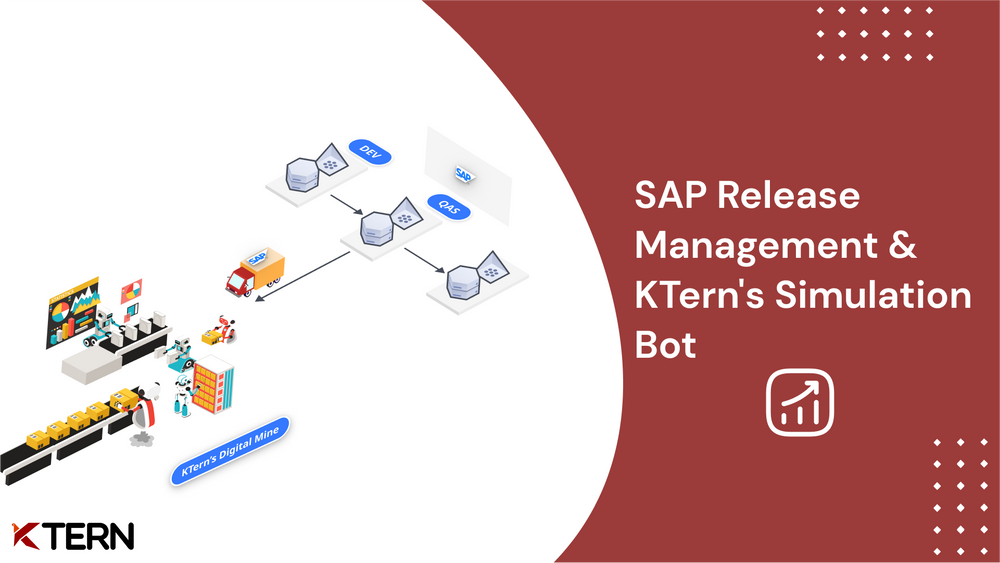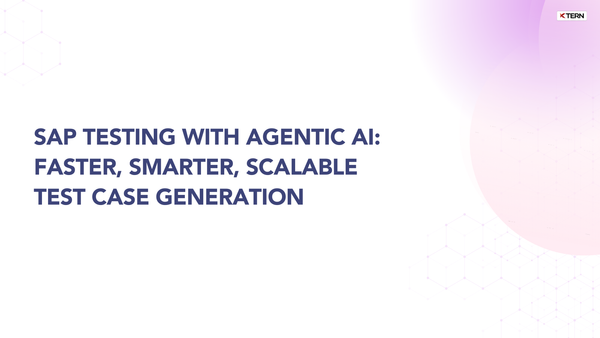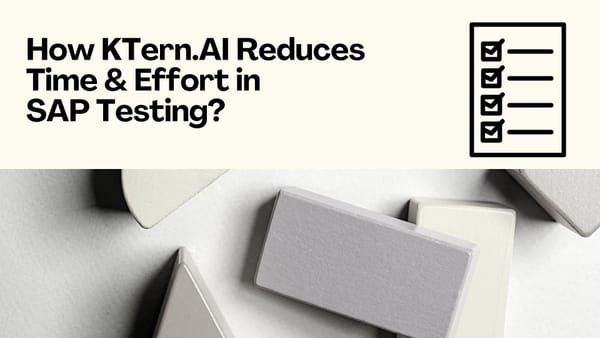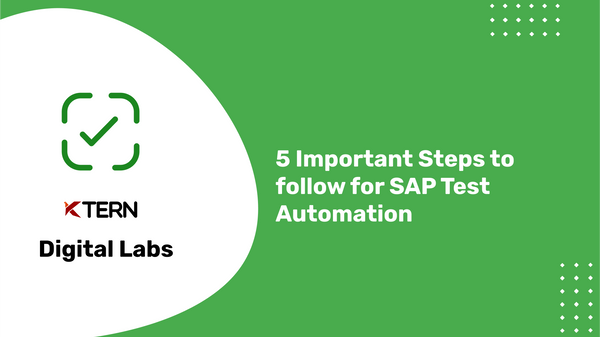SAP Transport Release Management and Strategy
SAP Transport Release Management and Strategy involves managing the transportation of changes made to an SAP system across different system landscapes, such as development, quality assurance, and production. A release strategy is created to ensure the smooth implementation of these changes in a controlled and efficient manner.
The release strategy determines the long-term viability of the entire company. Changes in the transport pipelines and release management could have an influence on business operations. Therefore, it is important to analyse the impact of changes and have a plan in place to manage them effectively.

Table of contents
- SAP Change Impact & Release Management
- Analyzing SAP Change
- Dependecies of SAP Release Management
- Nature of Changes & Types of Releases
- Strategy & Planning
- How KTern.AI can help?
SAP Change Impact & Release Management
Change impact analysis enables your digital transformation initiatives, from updating ERP applications to upgrading and consolidating solutions to migrating to SAP S/4HANA. The Change Impact Analysis is identifying the potential consequences of a change or estimates what needs to be modified. The release strategy determines the long-term viability of the entire company. Changes in the transport pipelines and Release Management could have an influence on business operations. These SAP changes can be :
- Internal Code Changes
- Standard Object Modifications
- Data Changes
The nature of the modifications, the technique, and the method for controlling the full cycle of SAP Impact Analysis are all factors in SAP release management.
Analyzing SAP Change
We know changes have impact and the release management is not easy, even in the most well-run organisations. When it comes to critical SAP tasks and transactions, we want to make sure that your business is running as efficiently as possible. If something goes wrong, don't worry—we can help.

The Simulation bots involved in KTern's Autonomous Enterprise Release Impact carry the transport requests in the pipelines. These transport objects/Simulation bots carry requests from a Quality system analyze the requests before it is sent to the production system.

"The Simulation Bots aims to automate the impact of transport requests on the business process and analyze all the changes."
Dependecies of SAP Release Management
The SAP Release Strategy and Planning depends upon :
- Types of Changes
- Types of Releases
- Release Schedule
- Release Plan
- End-User roles affected by it
In a nutshell, the above points can be explained as the based on the nature of changes the types of release is fixed. The release schedule will be aligned to the compatibility of the release plan. The release plan would be made based on the effect the end-users will have due to the changes. Now it all comes down to the fact that how KTern's Simulation bots come into the picture and change the entire dynamics of release strategy and planning.
Nature of Changes & Types of Releases
The release management strategy and the planning depend on the types of changes that are made in the system. The nature or the types of changes can be listed as:

- Major Change: The most disruptive one that can alter the functionality of the system. These can be affecting a significant function as well as multiple parts of a system.
- Operational Change: these are progress changes that could affect multiple lines of business more in continuous improvement and optimization.
- Minor Change: Intended for a single SAP module or line of business that just needs a fix or enhancements. It doesn't require full-blown regression testing but just local fixes.
- Emergency Change: These are very time-critical and need an immediate fix. These are generally bugs found in the production system.
Types of SAP Releases
Once the type of change is identified, the release manager can focus on the type of release and the effect it will have on the SAP system. The types of releases can be classified as :
- Major Releases: These are to be properly planned as these can cause major disruption in the SAP system.
- Minor Releases: These are relatively simpler and are just functional enhancements
- Emergency Releases: These releases are of utmost necessity and these are completely unplanned.
Strategy & Planning
The release manager is responsible for maintaining the release schedule. The release schedule is an integral part of SAP release management as it is made based on understanding the nature of changes and the release type. A release schedule is maintained according to the release cycles.

"The Release Schedule aligns with the interests of end-user testing and training scenarios".
Release Plan
Based on the strategy, a detailed plan on the release schedule is made known as the release plan. The plan would have tentative dates of activities and cut off dates so that the project can Go-live on time.
"For all the major releases, the release plan follows SAP Activate methodology strictly"
Since "Change is the only constant". KTern aims to offer an automated solution to the release manager where they can maintain the changes and analyze the same.
KTern.AI Digital Mines - Release Impact
How KTern.AI can help?
All the Simulation bots deployed to analyze the SAP change impact are part of a series of bots together known as a Digital Mine. These Mines analyze the transport requests, predict the impact, show the affected stakeholders/ SAP end-users, possible test cases all under the release plan. which can be formulated according to the mine deployment. These Simulation bots get deployed on the digital console where all the impacted processes and test cases are visible with the stakeholders.

To summarise the importance of KTern's Simulation Bot in SAP Change Impact analysis and Release Management. One can say that the bot automates all the possible changes, which can help in better strategist the release plan showing the possible impact, the stakeholders who are impacted due to these changes. Hope on with us on this journey of Digital Transformation. Get Started with us at Demo or Contact Us.




